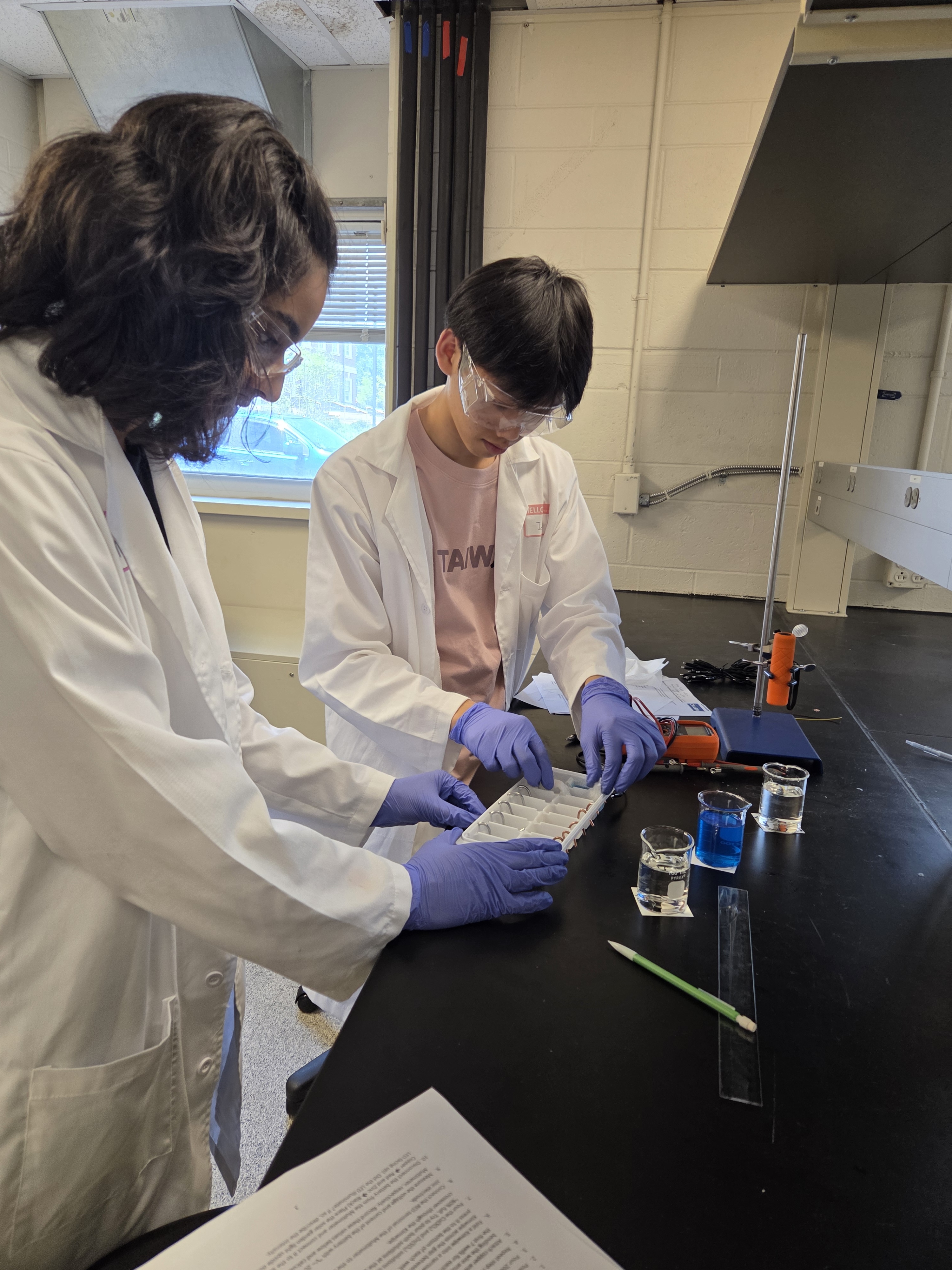 By Divya Abhat, MRSEC Web Team
By Divya Abhat, MRSEC Web Team
Last summer, 12 high school students were challenged to identify a mystery polymer. As part of a summer internship—now in its second year—they visited the chemical giant Chemours where they gained access to high-tech lab equipment rarely open to the public and were provided with relevant clues and tests to help solve the puzzle. It’s as hands on as it gets and gave this young group valuable exposure to the world of STEM.
The internship program, called the Foundations for Recruitment of Great Engineers and Scientists (FORGES), is run by the University of Delaware’s MRSEC-funded Center for Hybrid, Active, and Responsive Materials (CHARM). The program is designed to give students who are unsure about STEM—or those interested but uncertain about direction—an opportunity to explore both academic and career pathways.
Although CHARM has organized outreach activities before, this five-day summer internship takes a more focused approach, aimed at engaging high school students while strengthening the University’s ties to the local community.
Scientists in Training
“We work with other departments and industry partners to allow them to come to our labs, do hands-on activities and meet faculty and students in different departments,” says Allison Landry, CHARM’s Education Director who develops and manages education and outreach efforts such as FORGES for K-12 and undergraduate students.
This year, organizers worked with the University’s mechanical engineering, materials science engineering, biology, chemical and biomolecular engineering departments as well as the Gene Editing Institute to give students a wider array of experiences within STEM.
Faculty in each of those departments—along with the help of graduate students—develop the curriculum, resulting in a rich mix of experiments. This year, for instance, activities ranged from robotics building and coding in the mechanical engineering department to experiments in fertilization of sea urchin eggs and sperm in the biology department to studying materials strength in the materials science department.
Equally valuable were the lunch breaks, when students could have informal conversations with faculty and graduate students about college and career paths. “One of the days I was supervising the students, they ended up having a really interesting conversation with the grad students and the postdocs there of what is grad student life,” says Joseph Madanat, FORGES program coordinator. “One of the faculty members there was telling them about their journey, how they started in the arts, and then took a science class and slowly moved to getting a biology degree.” According to Madanat, these firsthand accounts help demystify graduate life and other aspects of academia.
The Application Process
In its first year, FORGES recruited students mainly through word of mouth. This year, organizers shifted to an application-based system and received nearly 200 applications. From those, 12 students were selected by lottery. Applicants were asked to submit an essay on one of four prompts, including: What is something you wish you had more access to in STEM? and Why do you find STEM interesting?
As interest continues to grow, there’s no question that this effort is a success. In fact, last year’s post-internship survey showed that 100 percent of students felt more competent for future lab work, and 100 percent of those planning to attend college were more likely to pursue STEM while also gaining a better understanding of how research applies to the real world.
Lighting the Spark
The program’s goal is to broaden participation in STEM by reaching students early. “We’re at least a stop in the journey where they can figure it out, so that if we do have students that end up on the STEM path, that’s amazing,” says Madanat. “But if we end up with students who pivot and do something completely different, they at least have the knowledge [that] science isn’t a mystery.”
